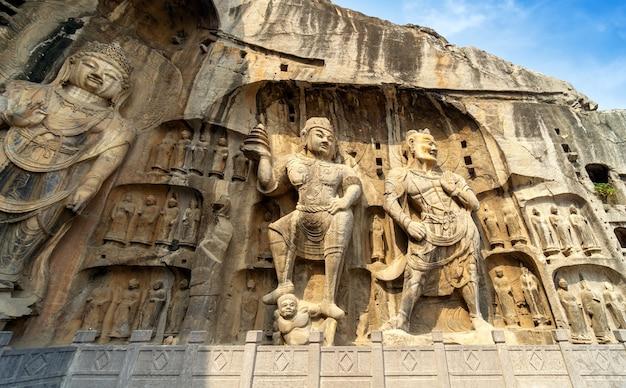Welcome to a journey back in time, to a period of unparalleled creativity, intellect, and cultural rebirth. The Renaissance, which spanned from the 14th to the 17th century, marks an era that holds great significance in the annals of human history. As we delve into the past, we will uncover the four distinctive characteristics that define this extraordinary period.
The Renaissance, born in Italy and later spreading across Europe, was a time of immense transformation and innovation. It saw the emergence of remarkable individuals who reshaped the realms of art, science, literature, and philosophy. Let us unravel the mysteries of the Renaissance and understand what made this period so remarkable.
Join me as we explore the remarkable characteristics that set the Renaissance apart from other eras in history. Discover the influential figures, iconic achievements, and the enduring legacies that continue to shape our world today. Come, let us embark on this enlightening journey through time and discover the essence of the Renaissance.

Renaissance Characteristics: A Blend of Creativity, Ingenuity, and Style
A Cultural Blossoming
The Renaissance was an era of immense cultural and intellectual growth that emerged in Europe during the 14th to 17th centuries. It was characterized by four prominent features that shaped and defined this period of history.
1. Artistic Mastery: From Canvas to Creation
One of the most recognizable aspects of the Renaissance was its extraordinary artistic achievements. Artists such as Michelangelo, Leonardo da Vinci, and Raphael graced the world with their unparalleled talent, producing masterpieces that continue to mesmerize audiences to this day. The period was marked by a shift toward realism and humanism, where artists sought to imbue their work with emotions, lifelike details, and a deeper connection to the human experience.
2. Intellectual Curiosity: Unleashing the Power of the Mind
The Renaissance marked a significant resurgence in intellectual pursuits and scholarship. Scholars like Galileo Galilei and Nicolaus Copernicus challenged traditional beliefs, paving the way for the Scientific Revolution. This period witnessed the discovery and exploration of new ideas, including revolutionary scientific theories, the study of classical literature, and the development of humanist philosophies. The thirst for knowledge was unquenchable, driving individuals to push the boundaries of what was known and explore uncharted territories.
3. Humanist Ideals: Celebrating Humanity’s Potential
Humanism was a fundamental characteristic of the Renaissance, emphasizing the inherent worth and potential of human beings. During this time, there was a renewed interest in the classical works of ancient Greece and Rome, with a focus on the values of individualism, rationality, and human achievement. Humanist thinkers, such as Petrarch and Erasmus, espoused the importance of education, critical thinking, and the pursuit of personal growth. The belief in the power of the individual became a driving force behind the Renaissance’s progress and innovation.
4. Technological Advancements: Paving the Way for Progress
The Renaissance witnessed significant advancements in various fields, including science, technology, and engineering. Innovations like the printing press, developed by Johannes Gutenberg, revolutionized the dissemination of knowledge and contributed to the spread of ideas. Furthermore, exploration and navigation techniques improved, leading to significant voyages of discovery and the exploration of new lands. These technological advancements provided a solid foundation for future progress and propelled society forward.
Throughout the Renaissance, creativity flowed, minds expanded, and boundaries were shattered. The combination of artistic brilliance, intellectual curiosity, humanist ideals, and technological advancements paved the way for a period of unparalleled growth and transformation. By blending these four characteristics seamlessly, the Renaissance left an indelible mark on history, forever inspiring future generations to strive for greatness.

FAQ: Answers to Your Burning Questions About the Renaissance
What were the defining characteristics of the Renaissance
The Renaissance was a period of cultural and intellectual rebirth in Europe, characterized by several key features:
-
Humanism: The Renaissance was fueled by a renewed interest in human knowledge and achievements, shifting the focus from the divine to the individual. Humanists emphasized the importance of education, critical thinking, and the exploration of human potential.
-
Secularism: Renaissance thinkers sought to understand and appreciate the world in its own terms, rather than exclusively through a religious lens. This shift led to advancements in many fields, including science, art, and philosophy.
-
Revival of Classical Antiquity: The Renaissance embraced and drew inspiration from the classical cultures of ancient Greece and Rome. This fascination with classical literature, art, and philosophy inspired new ideas and artistic expressions.
-
Artistic Innovation: The Renaissance witnessed an explosion of artistic creativity, with artists like Leonardo da Vinci, Michelangelo, and Raphael producing masterpieces that pushed the boundaries of techniques and expression. Art became more realistic and focused on capturing the beauty of the natural world.
Who were the prominent figures of the Renaissance
The Renaissance was home to many influential individuals who left an indelible mark on history. Here are two of the most noteworthy:
-
Leonardo da Vinci: Famous for his Mona Lisa and The Last Supper, da Vinci was a true Renaissance man. He excelled in various areas, including art, science, engineering, and anatomy. His curiosity and brilliance continue to inspire awe even today.
-
Niccolò Machiavelli: Known for his seminal work, The Prince, Machiavelli was an Italian philosopher, statesman, and writer. He explored the realities of political power and paved the way for modern political science.
What sparked the Renaissance
The Renaissance was set in motion by a confluence of factors. One significant event often credited with sparking the Renaissance was:
- The Fall of Constantinople: In 1453, the Ottoman Empire conquered Constantinople, the capital of the Byzantine Empire. This event led to an influx of Greek scholars and texts into Europe, igniting a renewed interest in classical knowledge and ultimately fueling the intellectual revolution of the Renaissance.
Who made the greatest impact during the Renaissance
While numerous individuals influenced the Renaissance, two figures stand out for their enduring impact:
-
Galileo Galilei: An Italian astronomer, physicist, and mathematician. His astronomical discoveries using the telescope strengthened the heliocentric theory, challenging the prevailing geocentric view and forever altering our understanding of the universe.
-
Johannes Gutenberg: The German inventor is renowned for developing the printing press with movable type. This invention revolutionized the spread of knowledge, enabling books to be produced faster and more affordably. Gutenberg’s innovation played a vital role in disseminating Renaissance ideas across Europe.
Who were the renowned composers of the Renaissance period
The Renaissance was marked by an explosion of musical creativity. Two notable composers from this period include:
-
Josquin des Prez: A Franco-Flemish composer considered one of the greatest of the Renaissance. His compositions showcased intricate harmonies and emotional depth, influencing generations of musicians that followed.
-
Giovanni Pierluigi da Palestrina: An Italian composer known for his sacred choral music. Palestrina’s compositions exemplified the counterpoint technique, creating harmonically rich compositions that set a standard for sacred music during the Renaissance.
Who was the most influential Renaissance thinker and why
The Renaissance was a breeding ground for profound thinkers, but perhaps none left a greater impact than:
- Desiderius Erasmus: A Dutch philosopher, theologian, and humanist. Erasmus championed a more tolerant and inclusive form of Christianity, criticizing the corruption and dogmatism of the church. His ideas laid the foundation for religious reform and paved the way for the Protestant Reformation.
What defines a Renaissance man or woman
A Renaissance man or woman refers to individuals who embody the ideals and characteristics of the Renaissance. These individuals possess a well-rounded education, excel in multiple fields, and have a thirst for knowledge. They specialize in gracefully combining intellectual pursuits with artistic, scientific, or philosophical endeavors.
What are the characteristics of a Renaissance man
Renaissance men are known for their diverse talents and interests. They excel in fields such as art, science, literature, and politics. They possess:
-
Broad Knowledge: Renaissance men have a deep curiosity and wide-ranging knowledge across various disciplines, allowing them to engage in meaningful conversations and make connections between different areas of study.
-
Critical Thinking: They possess sharp analytical skills and the ability to reason and evaluate information critically. This enables them to solve complex problems and contribute innovative ideas.
-
Artistic Skills: Renaissance men have a flair for the arts, whether it be painting, music, poetry, or architecture. They appreciate beauty and strive to create it themselves.
-
Natural Inquisitiveness: Constantly seeking new challenges and experiences, Renaissance men have a thirst for discovery and never stop learning.
What makes a Renaissance woman
A Renaissance woman embodies many similar qualities to a Renaissance man. In addition, she possesses:
-
Intellectual Stature: A Renaissance woman is well-educated and exhibits intellectual prowess in her chosen fields of study, breaking barriers and challenging societal norms.
-
Independence: She is not bound by traditional gender roles but instead embraces her autonomy and seeks opportunities for personal and professional growth.
-
Artistic Expression: Similar to a Renaissance man, a Renaissance woman often expresses herself through art or literature, contributing to the cultural and intellectual movements of the era.
What distinguishes Renaissance music
Renaissance music stands out for several defining characteristics:
-
Polyphony: Renaissance composers explored intricate polyphonic textures in their compositions, intertwining multiple melodic lines to create harmonically rich and complex music.
-
Vocal Emphasis: The human voice took center stage in Renaissance music. Composers devoted great attention to choral music, creating lush harmonies and melodic beauty.
-
Religious Significance: Much of the music composed during this period was religious in nature, designed to be performed in churches or for religious ceremonies.
-
Expressive Text Setting: Renaissance composers sought to convey meaning through the interplay of music and text, using vocal techniques and musical phrasing to evoke specific emotions or highlight important lyrical elements.
So, there you have it! The Renaissance was a period characterized by humanism, secularism, a revival of classical antiquity, and remarkable artistic innovation. Prominent figures like Leonardo da Vinci and Niccolò Machiavelli left a lasting impact, while Galileo Galilei and Johannes Gutenberg reshaped our understanding of science and knowledge dissemination. Composers like Josquin des Prez and Giovanni Pierluigi da Palestrina enriched the musical landscape, and thinkers like Desiderius Erasmus challenged religious norms. Renaissance men and women were distinguished by their broad knowledge, critical thinking, artistic talents, and profound curiosity. And let’s not forget the distinctive qualities of Renaissance music, with its polyphony, emphasis on vocals, religious significance, and expressive text setting. The Renaissance truly was a period of unparalleled creativity, innovation, and intellectual exploration.
